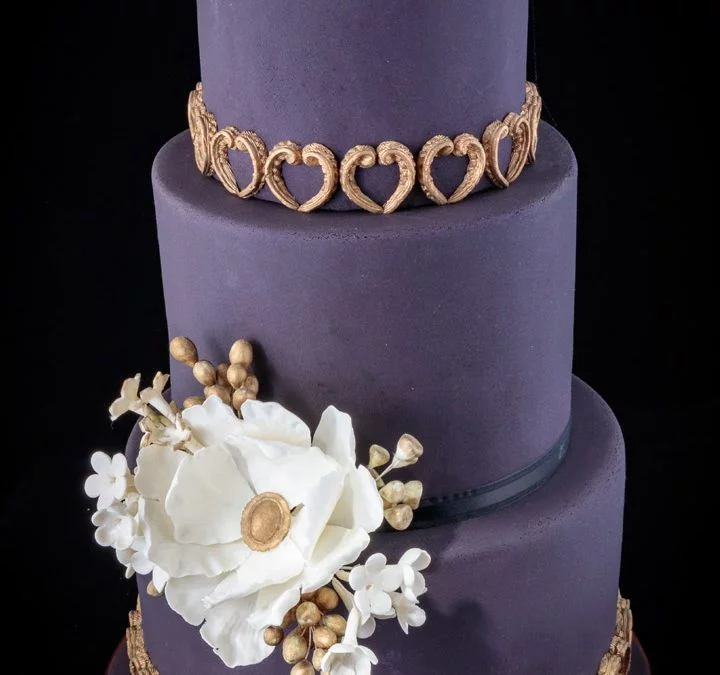The history of wedding cakes begins in Ancient Rome when a wheat or barley cake was broken over the bride’s head to encourage luck and fertility. The newlyweds would eat the crumbs together to unify themselves as a married couple. Guests would pick up the leftover crumbs for their own good fortune.
That practice continued until the Romans conquered Britain in 43 CE when the British took the bread and threw it at the bride to aid infertility. By the medieval period, barley bread was switched out for spiced buns, cookies and scones that were stacked up as high as they could go. The newlyweds would attempt to kiss over the pyramid of sweets, and if they succeeded, it meant good fortune was upon them. It would be several decades before stacked tiers held together by broom handles would become the norm.
In 1685, Bride’s Pye was created and deemed the first official wedding confection of Yorkshire. However, this pie wasn’t filled with sweets. Instead, it consisted of lamb testicles, oysters, throat and other animal products definitely not common in wedding desserts today. But to refuse a piece of this pye was to doom the couple to an unhappy life. A ring was hidden in the pye as well, and whoever found it was assumed to be the next person to get married. Very similar to the effect of catching a bouquet, but not where that tradition began.
Wedding Pies and Dessert
Wedding cakes began replacing pies in the 17th century that were made by local bakers, as many homes didn’t have ovens. The simple sugar-dusted desserts could either be eaten at the wedding or taken home by the bride and groom to share together. If you wanted to ensure a happy marriage, both the bride and groom would have to take a bite before tossing the cake slice and the plate over their heads. If it broke, then their lives would turn out wonderfully.
It’s thought that tiered cakes didn’t make an appearance until the late 18th century. As the story goes, a London baking apprentice fell for his boss’s daughter. Taking inspiration from the tiered structure of the St. Bride Church, he wanted to create an elaborate pastry to propose to her with.
And so, that tiered cake went on to shape how most traditional wedding cakes are created today. Whether they’re two-tiered or six, nothing has really changed in its construction. The decorative tools and techniques, however, have drastically changed as the years go by. Various trends come and go before coming back again. The wedding cake is part of the continuing cycle of what is seen as one of the most important aspects of a wedding, besides the dress that is.
If you are looking for an outstanding custom wedding cake, made from the best ingredients, free from preservative and made from scratch, then Casa Romana Sweets should be your first and only stop. Not only do we create custom cakes and desserts, but we also offer gourmet food as well. With authentic, traditional European flavors made from family recipes, our Oakville, Ontario bakery can’t be beaten. Our talented and passionate artists will make your dream cake come to life, so call us or stop by to talk about pricing and design ideas.

